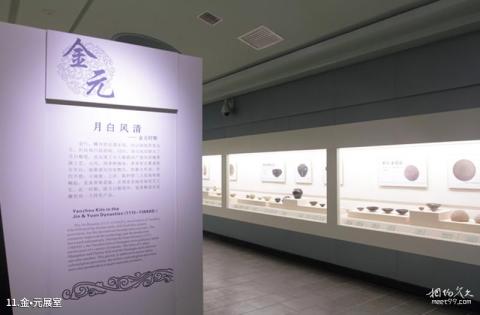
Introduction to the Jin·Yuan Exhibition Room: The Yaozhou Kiln of the Jin Dynasty inherited the Song Dynasty system, still maintained a certain production scale and a high technical level, and still mainly fired celadon. The glaze color of early celadon was green, and the carvings and printing patterns tended to be simple. The moon-white glazed porcelain successfully produced at this time has a thick glaze layer and a jade-like texture, which is a major feature of the Yaozhou kilns of the Jin Dynasty. In the later period, turmeric glazed porcelain was mainly used, and the astringent circle stacking firing process emerged that could greatly increase the output, making it another feature of Yaozhou kiln in the Jin Dynasty.
In the early Yuan Dynasty, Yaozhou kiln mainly produced carved and printed turmeric-glazed celadon, but it was obviously in decline. In the later period, the output of black porcelain continued to expand, and Yaozhou kiln once again showed a diversified development situation. At the same time, three major kilns, Lidipo, Shangdian and Chenlu, emerged one after another, inheriting the Huangbao porcelain lineage and drawing on the strengths of kilns from various places, injecting fresh blood into the continuation and development of Yaozhou kilns.
